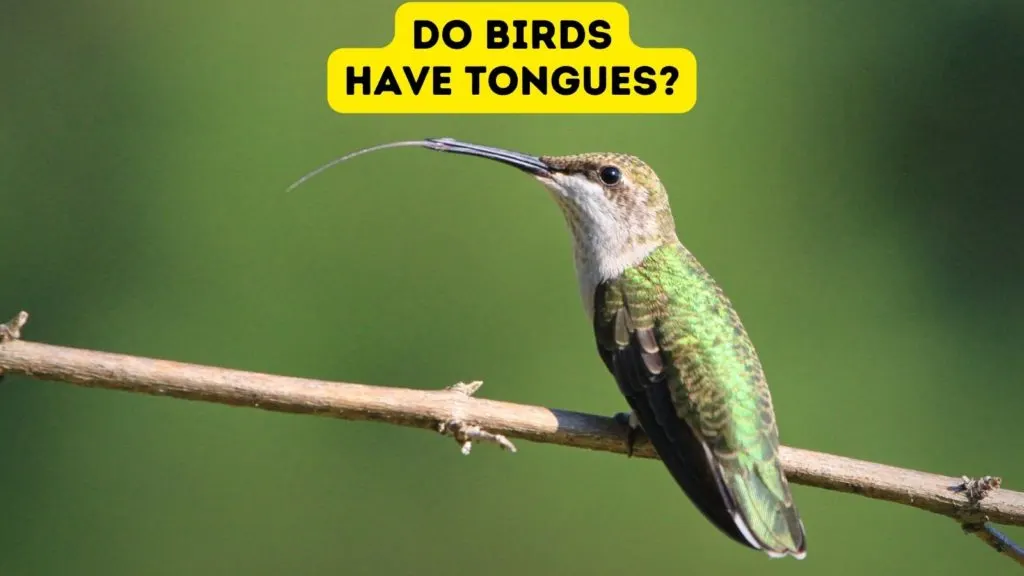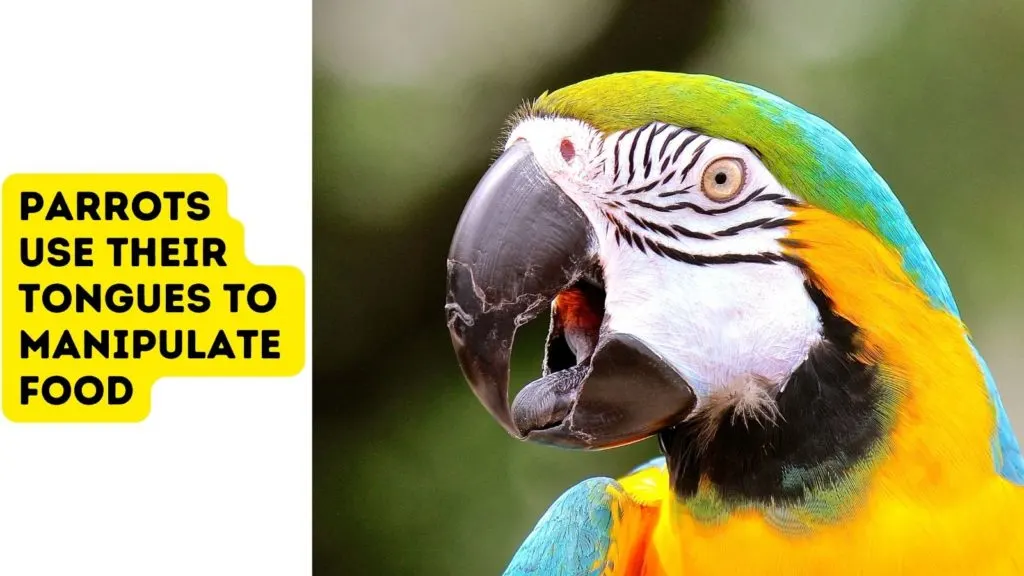Birds are fascinating creatures admired for their ability to fly and their colorful plumage, yet one might wonder about the more obscure aspects of their biology, such as their tongues. Indeed, birds do have tongues, and these organs are incredibly diverse in both structure and function across different bird species. Let’s look at the different types of bird tongues!

The role of a bird’s tongue is multifaceted: aiding in feeding, manipulating food, and, for some species, playing a part in vocalization.
While some birds have tongues that are simple and flat, others have evolved highly specialized tongues to match their unique dietary needs or environmental niches.
For instance, woodpeckers have an elongated, protrusible tongue that they use to extract insects from trees, and hummingbirds have a long, tubular tongue to sip nectar from flowers.
Understanding bird tongues provides insight into how birds interact with their ecosystems and adapt to their specialized roles. Observing these variations not only piques curiosity but also sheds light on the evolutionary processes that shape the natural world. So next time you watch a bird pecking at the ground or sipping from a flower, consider the hidden complexities that lie just beyond what meets the eye.
Do All Birds Have Tongues?
All birds have tongues. Birds evolved from theropod dinosaurs, which all had tongues–so the common ancestor of all living birds had a tongue.
Even flightless birds like penguins and ostriches still have tongues. Their tongues may not be as specialized as other birds due to their different diets/feeding behaviors.
The smallest bird tongues are found in hummingbirds, but even the tiniest hummingbird species still has a minute tongue inside its beak.
Bird Tongue Anatomy
In exploring bird tongue anatomy, you’ll find that their tongues are diverse and highly specialized structures, shaped by diet and habitat. Let’s unfold the specifics of structure, movement, and sensory capabilities.
Tongue Structure
Bird tongues vary significantly across species, reflecting their adaptation to specific ecological niches. For example, woodpeckers have long, barbed tongues to extract insects from crevices, while hummingbirds possess long, tubular tongues for sipping nectar.
- Woodpeckers: Long, thin, barbed
- Hummingbirds: Long, tubular, bifurcated at the tip
- Ducks and geese: Flat, lamellae-edged tongues for filtering food from water
Tongue Movement
Your observation of bird tongue movement reveals much about a bird’s feeding behavior. Tongue movement can range from high-speed flicking in hummingbirds to sophisticated coordination in parrots, which use their tongues for manipulating objects.
- Hummingbirds: Rapid flicking motion
- Parrots: Dexterous, used as a tool

Sensory Functions
Bird tongues also have tactile and taste sensors, although they are less developed compared to humans. The sensory function of a bird’s tongue is vital for assessing food quality and texture.
- Tactile sensors: Present at the tongue’s surface
- Taste buds: Fewer in number, located at the base of the tongue
How Birds Use Their Tongues
Bird tongues are diverse and specialized organs, enabling various species to feed effectively, produce sounds, and carry out other necessary functions.
Feeding Mechanisms
Birds use their tongues in different ways when feeding, tailored to their specific diets and environments. For instance:
- Nectar feeders: Such as hummingbirds, have long, tubular tongues that they use like a straw to sip nectar.
- Seed eaters: Birds like finches have shorter, sturdier tongues to help manipulate and husk seeds.
- Meat eaters: Predatory birds, like eagles, possess strong, hooked tongues for tearing flesh.
Vocalization and Sound Production
Your bird’s tongue plays a critical role in its ability to produce a wide range of vocalizations. Here are a few examples:
- Songbirds: They adjust the position and shape of their tongues within the oral cavity to manipulate airflow and create intricate songs.
- Parrots: These birds can use their muscular tongues to mimic human speech and other complex sounds.
Grooming and Other Uses
Apart from feeding and vocalization, birds use their tongues for numerous other activities such as:
- Grooming: Birds often use their tongues to spread preen oil from their preen glands to their feathers for waterproofing and conditioning.
- Heat regulation: Some species like nighthawks and whip-poor-wills evaporate water off their tongues to cool down, much like a dog does when he pants. In birds, this is called fluttering (or gular fluttering as a more formal term).
This intricate organ is far more than just a tasting tool for birds; it’s a multipurpose instrument essential for their survival.
Fun Facts About Bird Tongues
- Hummingbirds have the longest tongues relative to their body size of any animal. Their tongues can extend up to 1.5 inches to reach nectar in flowers.
- Woodpeckers have very long, barbed tongues that they flick in and out at speeds over 10 times per second to catch insects.
- Flamingos use their tongues to filter feed in water. Their tongues are grooved to help them strain algae and small crustaceans from water.
- Parrots have no taste buds on their tongues. Their tongues are adapted for grabbing and manipulating food rather than tasting it.
- Hummingbird tongues split at the tip into two tube-like structures to more efficiently lap up nectar.
- Birds of prey like eagles and hawks have very short, stiff tongues covered in tiny spines or hooks to help them tear flesh from prey.
- Pelicans have unusually long tongues that are not attached at the back, allowing them to fully extend their tongues out of their bills to scoop up fish and water.
- Nightjars have very wide, flat tongues that are well adapted for catching insects in flight at night.
- Parrot tongues are covered in tiny papillae or fleshy bumps that help them grasp food and maneuver it in their beaks.
More Posts You Might Like
- 8 Letter Bird Names - August 14, 2024
- 7 Letter Bird Names - August 14, 2024
- 7 Birds Named After Famous People - July 23, 2024
